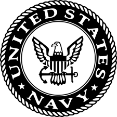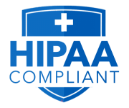Ever feel buried under a mountain of rolled-up blueprints or giant maps? Those large format documents are essential, but they take up tons of space and can be a hassle to deal with.
However, there’s a solution: large format scanning services, also known as wide format or oversized document scanning services.
This blog delves into the transformative power of digitized backups for large documents, showing you the numerous benefits it unlocks and how it can empower your business or personal projects.
Why Do You Need to Scan Large Documents for Digitization?
Imagine a world where you can access critical architectural plans from anywhere, share complex engineering diagrams with colleagues across the globe, or effortlessly archive historical maps for future generations. Large format document scanning makes this a reality. Here’s why it’s time to ditch the bulky stacks and go digital:
- Save Space: Free up valuable physical space currently occupied by filing cabinets overflowing with oversized documents.
- Enhanced Security: Protect irreplaceable documents from physical damage, loss due to fire or natural disasters, and unauthorized access.
- Improved Accessibility: Access scanned documents from any device with an internet connection, fostering remote collaboration and eliminating the need for physical copies.
- Streamlined Workflow: Simplify document retrieval and sharing and save time and effort while removing the need to manually search through physical archives.
- Increased Efficiency: Facilitate faster project turnaround times by readily sharing documents with colleagues or clients.
- Environmental Benefits: Reducing reliance on paper and filing systems contributes to a more sustainable approach.
Large Document Scanning Services: Your Path to Digital Transformation
Digitizing oversized documents might seem daunting, but that’s where large format scanning services come in. These specialized companies have the expertise and equipment to handle your oversized documents carefully.
The process typically involves:
- 1. Consultation: Discuss your specific needs and document types with the oversized document scanning service provider.
- 2. Document Preparation: Services may offer document pickup or secure drop-off locations.
- 3. High-Quality Scanning: Large format scanners capture every detail of your documents with exceptional resolution. Depending on the volume and complexity of your documents, the scanning process may be automated or involve manual feeding.
- 4. Image Enhancement: Services might offer cleaning up scans, removing imperfections, and optimizing for clarity. Many services provide image enhancement as an additional step. This can involve removing background noise, sharpening faded text, or correcting color imbalances. Image enhancement ensures your scanned documents are clear, crisp, and easy to read on a digital screen.
- 5. File Indexing: For easy retrieval and organization, your scanned documents are electronically indexed with keywords or tags. These keywords can be based on the document type (blueprint, map, etc.), project name, creation date, or any other relevant details you specify. This indexing lets you find the exact document you need in seconds through a simple search.
- 6. Secure Storage and Delivery: Scanned files are securely stored on digital servers and delivered in your preferred format. You can receive your scanned files on a CD, DVD, or through a secure cloud storage link, allowing you to access them from any device with an internet connection.
Beyond the Basics: Advanced Features of Large Format Scanning Services
Many large or wide format scanning services offer additional features to enhance your digital experience further:
- Optical Character Recognition (OCR): This technology converts scanned text into editable digital text, allowing easy search and manipulation.
- Document Management Systems: Services might integrate your scanned documents with document management systems for centralized organization and access control.
- Cloud Storage: Store your scanned documents securely in the cloud for any time, anywhere access.
- Disaster Recovery: Ensure peace of mind knowing your valuable documents are safeguarded against unforeseen events.
The Right File Format for Your Needs
Large format scanning services offer a variety of digital file formats for your scanned documents. Choosing the right one depends on how you plan to use them:
- Portable Document Format (PDF): A universal format that preserves the layout and formatting of your original document. Ideal for sharing and archiving.
- Tagged Image File Format (TIFF): High-quality format that maintains the original image data without compression. Best for documents requiring maximum detail, like architectural plans or engineering drawings.
- JPEG: Common image format with varying compression levels. It finds a nice balance between the file size and image quality and is also a good option for photos or less detailed scans.
- DWG/DXF: These formats are native to Computer-Aided Design (CAD) software and allow further editing and manipulation if your scanned documents are technical drawings.
Bottom Line
At Smooth Solutions, we understand the vital role large format documents play in various industries. We offer a full suite of large format document scanning services designed to meet your specific needs. Our experts use state-of-the-art scanning technology to ensure high-quality scans, secure storage, and seamless integration with your existing systems.
Ready to unlock the power of digital backups for your large format documents? Contact Smooth Solutions today for a free consultation and find out how we can help you simplify your workflow, enhance accessibility, and safeguard your valuable documents for years.














